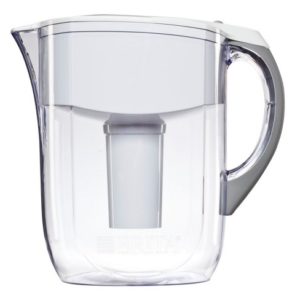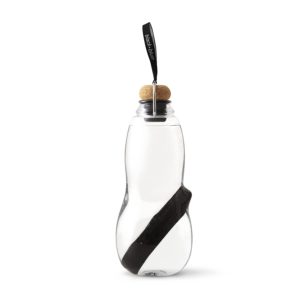If you are looking to improve the taste of your tap water, there are a number of easy solutions available to you. Almost all of these involve filtering the water, in order to remove whatever is making it taste bad.
The good news is that this sort of filtering is simple, affordable, has almost no downsides, and comes with other benefits.
Taste, Safety, Or Both?
We recommend reading our article on Choosing the Right Water Filter Type before making your purchase. You might want a simple filter or a big, reverse osmosis filter depending on the thoroughness of the water filtering you’d like to do.
The filters below will only filter for taste. If you want to remove contaminants from your waters, like pharmaceuticals or arsenic, you’ll want a NSF-certified water filter for removing chemicals (NSF standards 53 and 401), not just for improving flavor (NSF 42).
Filters That Improve The Taste of Water
Let’s jump right into it: what will make your water taste better? Filtering out the things that are making it taste off. How do you filter minerals out of water? With a water filter or purifier. Simple enough, right? We’ll get into the details below, but for now we’ll jump right into the solutions.
To start: a tip is to run the water on cold for 10 to 30 seconds before drinking it. This will flush the water in the pipes and ensure you aren’t drinking anything that was collected while the water sat in place. This isn’t only free, it’ll help you avoid harmful contaminants and bad tastes.
Note, some of the links below may contain affiliate codes that are monetized to support this site. The monetization (or lack thereof) does not affect our decision-making.
Brita Water Pitcher with Filter

On of the most popular ways Americans choose to filter and improve the taste of their water is with a Brita pitcher. These are so popular that some people call every filtered pitcher a “Brita,” even if that’s not actually the case. These pitchers come in larger (10-cup) and smaller (5-cup) sizes and in lots of colors. You can even buy them in a dispenser shape if you want maximum capacity and the best possible use of the space inside your refrigerator.
Most Brita pitchers use a “coconut-based activated carbon” filter that removes mercury and other harmful substances, but is very good at improving water taste as well. If you only care about taste then you can opt for the Brita Stream pitchers, which have less filtration and are only designed to remove chlorine and some particulate. It’s a less robust filtration system but the filtering is much faster. The Stream filter really aren’t any cheaper than the normal Brita filters — Standard and Longlast — though, so cost isn’t a deciding factor, just speed.
Zero Water Pitcher
Like Brita, Zero Water sells pitchers and dispensers designed to live in your fridge. Zero Water has prices and sizes that are comparable to Brita’s, though Zero claims their filters are more effective than the competition (they don’t specifically name who).
Zero filters use a 5-stage system that includes activated charcoal, ion exchange, oxidation alloy, an ultra-fine screen, and a non-woven membrane. The filteration is focused on lowering the TDS (total dissolved solids) level, which means as many non-water things as possible are removed. This means bad things are removed (chemicals, salts, etc.) but also healthy and flavor-enhancing minerals. The filter is NSF Standard 53 and 42 certified.
Soma Water Pitcher
Soma Water is a water-filter subscription startup (that has since been acquired) with handsome products aimed at filtering water in order to improve the taste. The filters are NSF Standard 53 and 42 certified, which means real filtering is happening, but
Binchotan Activated Charcoal
Activated charcoal can be placed directly into a water pitcher into order to improve the taste. This won’t help with lead or mercury, but a charcoal filter is highly porous and will grab onto much of the organic material in your water (so long as it comes in contact with material). Activated charcoal is affordable and aesthetically pleasing, in addition to being a totally natural and chemical-free solution.
A popular model is from Black+Blum as is this one from Philips, but you can buy the charcoal without the pitcher/water bottle if you’d like.
Why Does My Water Taste Bad?
Long story short, your water tastes bad because there is stuff in it that shouldn’t be there. These things — usually referred to as dissolved solids — can make your water taste a bit off, which usually comes in the form of water that tastes overly salty, metallic, sulfurous, bitter, or just plan mineral-y.
These tastes can be the result of additions to the water that are totally safe (like a bit of extra iron or hydrogen sulfide which give your water a rotten egg taste) or compounds that are less safe, like runoff from fertilizer. Some of these compounds might get through the filtration at your public water facility while others might be added between the facility and your tap.
What Certifications Should I Look for?
For a water pitcher you should be on the look-out for at least two certifications: NSF Standard 42 and NSF Standard 53.
NSF/ANSI Standard 42: This is the certification for “aesthetic impurities” which means the filter is designed to improve the taste of water. Covered minerals/elements include: chlorine, iron, manganese, zinc, and hydrogen sulfide, but pH neutralization is factored in as well.
NSF/ANSI Standard 53: This is the certification for common health effects, as set by the United States Environmental Protection Agency (EPA). Covered minerals/elements include: fluoride, nitrate, nitrite, and heavy metals like lead, selenium, arsenic, chromium, cadmium, copper, and mercury.
